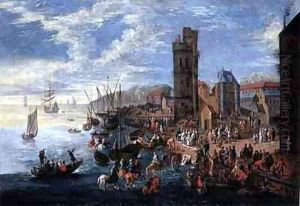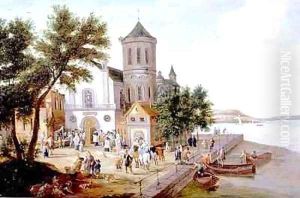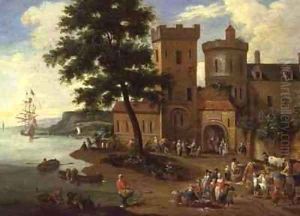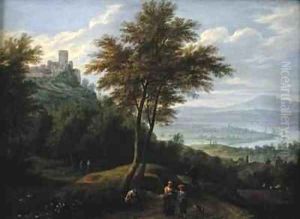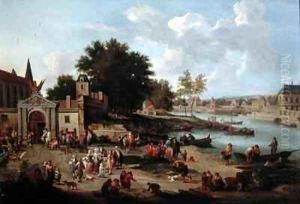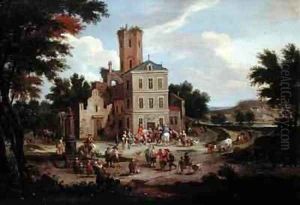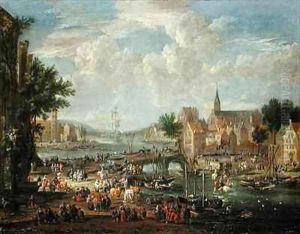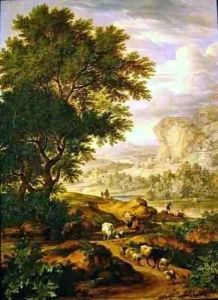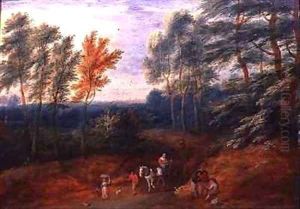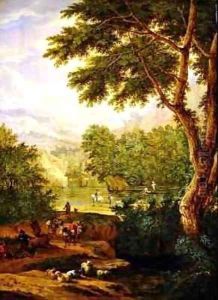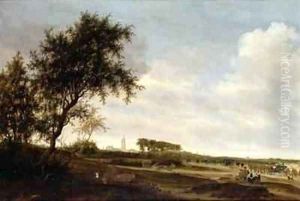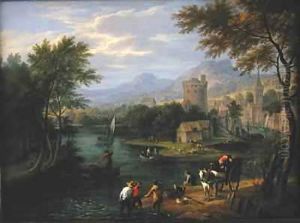Boudewyns Paintings
Pieter Boudewyns, a Flemish painter and engraver, was born around 1620 or 1621, although the exact details of his birthplace remain unclear. His artistic journey is intricately tied to the Baroque movement that flourished in the Southern Netherlands during his lifetime. Boudewyns is best known for his detailed landscapes and seascapes, which not only showcase his exceptional skill in capturing the essence of nature but also reflect the broader artistic trends of his era.
Boudewyns' career is marked by his mastery in both painting and engraving, a dual skill set that was highly appreciated in the 17th century's art market. He had a particular talent for depicting light and shadow, infusing his landscapes with a sense of realism and depth that was ahead of his time. His works often featured bustling scenes filled with people, giving a glimpse into the daily life of his contemporaries.
Despite his talents, Boudewyns did not achieve widespread recognition during his lifetime. Much of his work was consumed by a local audience, and it was only after his death in 1678 that his contributions to the Flemish Baroque began to be fully appreciated. His legacy is seen in the influence he had on subsequent generations of artists who drew inspiration from his attention to detail and his ability to capture the vibrancy of the world around him.
Today, Pieter Boudewyns' works are held in high esteem, with several of his paintings and engravings featured in museums and private collections around the world. His art serves as a valuable window into the Baroque period, offering insights into the aesthetic and thematic preoccupations of 17th-century Flemish artists. Boudewyns remains a figure of interest for art historians and enthusiasts alike, as they continue to explore the depths of his contributions to the rich tapestry of European art history.
